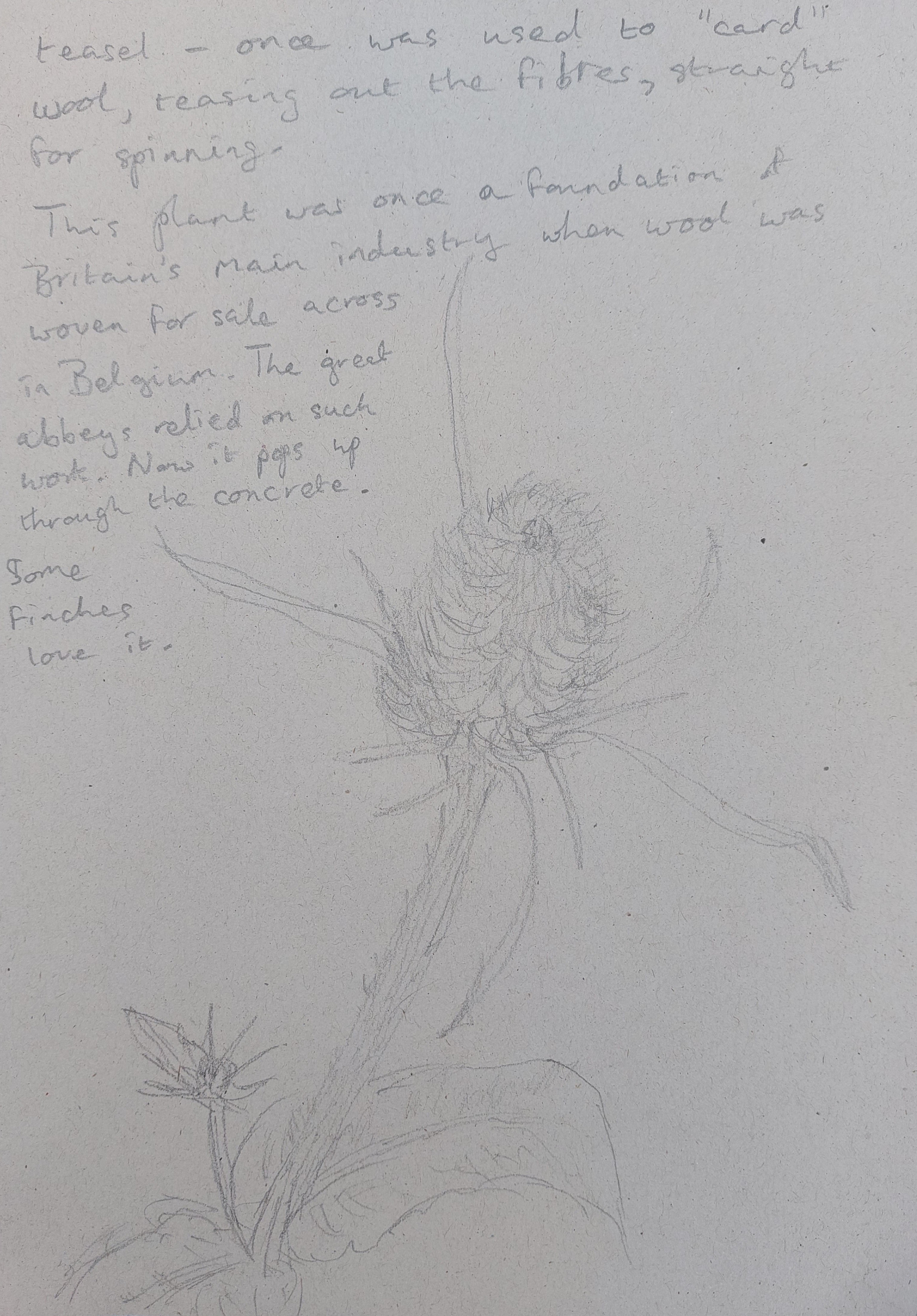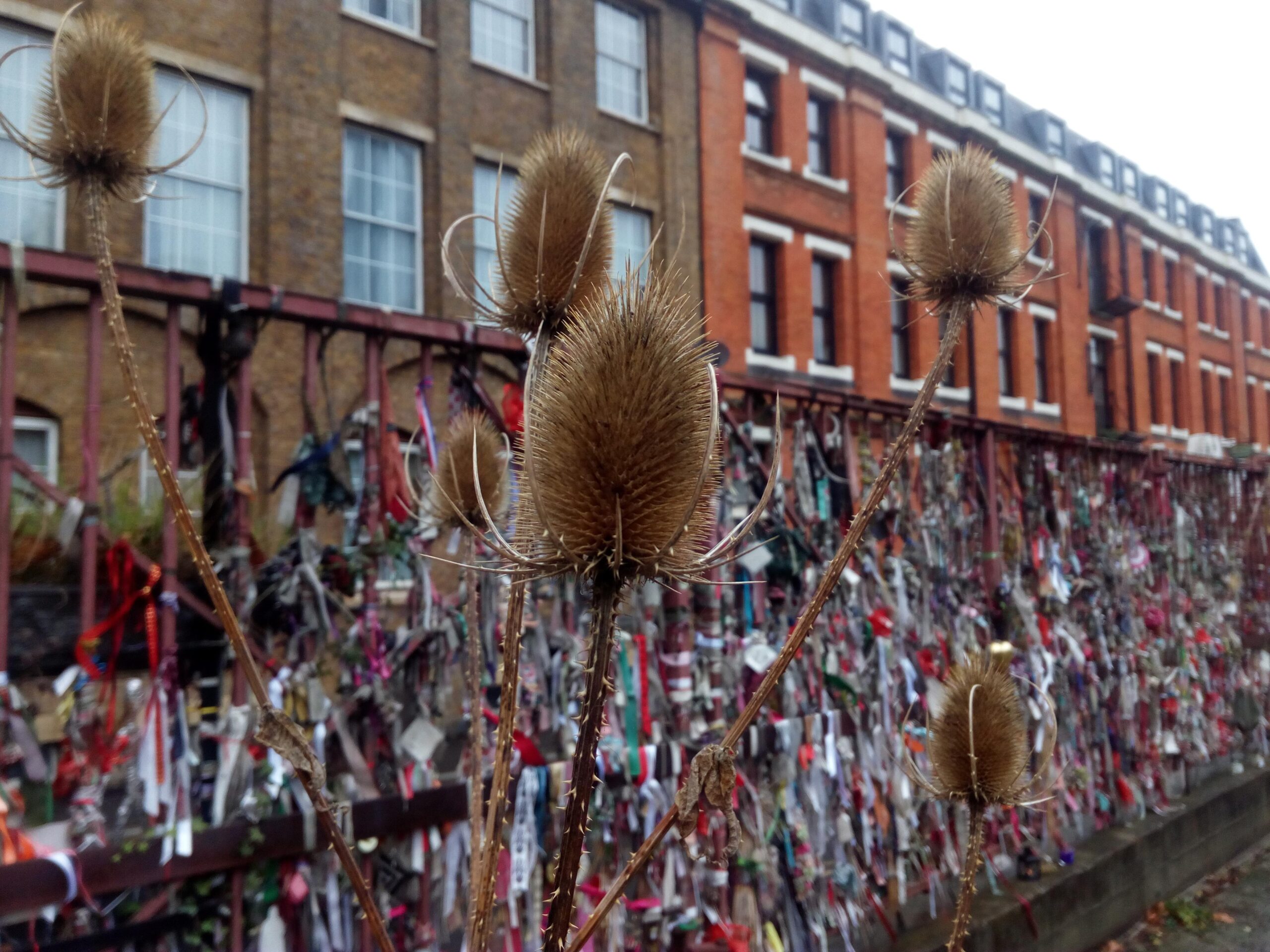
This beautiful profile of a teasel was drawn by one of our attendees at a recent biodiversity monitoring event at Crossbones.
Over the first winter that I was coming to know Crossbones, I was surprised at first to see a plant that looked dried out and dead left standing. It didn’t fit my idea of what a garden should be. I had grown up in a cultural context in which evidence of death and decay tended to be swept away in gardens, just as death and decay are often swept away in conversation and from being acknowledged as a central tenet of our everyday, embodied, and more-than-human existence.
Hej, Crossbones’ landscape gardener, pointed out to me the architectural beauty the teasels provide over winter, at a time when the garden is otherwise looking quite raw and bare. At the same time, their dried out stems provide a valuable habitat for overwintering insects. Since then, they’ve become a place I often take a moment to pause; their angular, branching arms create a steady frame through which to watch the ribbons fluttering on the gates. They shift my perspective. Each year as so much in the garden and beyond changes, I return to the spot where the teasels are and watch the gates again, and feel a sense of continuity. I must be looking through the offspring of familiar plants year on year, as teasels die back after running to seed. But they always come back in the same spot, give or take a few feet, just a few steps up the slope from the ribboned shrine.
